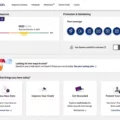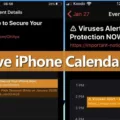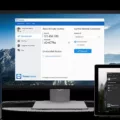Command and Control (C2) is a type of malicious attack that is becoming increasingly common in today’s digital world. It is used by malicious actors to gain control of already compromised systems within a target network, and then issue commands to those systems. In effect, attackers are able to remotely control computers and networks, allowing them to commit various cybercrimes such as data theft, spamming, distributed denial-of-service attacks, and more.
C2 attacks can be initiated through a variety of methods including exploiting vulnerabilities in applications or operating systems, phishing emails containing malicious links or attachments, or maliciously crafted DNS queries. Once the attacker has established a foothold within the target network, they can then use C2 frameworks to maintain communication with and control the compromised systems.
To understand why C2 attacks are so dangerous it’s important to understand what makes them unique. C2 frameworks allow attackers to control multiple computers at the same time from a single location. This enables them to quickly launch large-scale cyberattacks without having to individually compromise each system within the target network. Additionally, attackers can obfuscate their true location by using proxies or relays which makes it difficult for security teams to detect or trace back the source of the attack.
Fortunately, there are measures that organizations can take in order to prevent or mitigate these kinds of attacks. The first step is patching vulnerable applications and operating systems in order to prevent the exploitation of known vulnerabilities. Organizations should also implement strong authentication measures such as two-factor authentication and use anti-phishing solutions such as email filtering services which will help reduce the risk of malicious emails reaching users’ inboxes. Finally, organizations should stay up-to-date on best practices for detecting and responding to C2 attacks such as monitoring DNS traffic for suspicious activity or using honeypots which are designed specifically for trapping command and control activity on networks.
Command and Control (C2) attacks are increasingly becoming an issue for organizations everywhere due to their ability for attackers to remotely access compromised machines across networks without having individual access for every system in their sights. Fortunately, there are steps organizations can take in order to reduce their vulnerability against these types of attacks including patching vulnerable applications/systems, implementing strong authentication measures, using anti-phishing solutions like email filters, and staying up-to-date on best practices for detecting/responding against C2 threats like using honeypots or monitoring DNS traffic.

Understanding the Meaning of C2 in Cybersecurity
C2, or command and control, is a type of malicious network attack in which an attacker takes control of a computer or network by sending commands over the internet. Through C2 attacks, attackers can gain access to confidential data, monitor user activity, manipulate files and systems, disrupt service availability, and more. In some cases, C2 can be used to spread malware such as ransomware or spyware. The most common form of C2 is DNS (Domain Name System).
Understanding Command and Control C2 Malware
Command and control (C2) malware is malicious software designed to allow attackers to remotely control compromised systems over a network. The malware typically uses a malicious server to send commands and receive data from the infected machines. This allows attackers to access, modify, or delete files on the targeted systems, install additional malware, establish backdoors for future access, or use the infected machines as part of a botnet for distributed denial-of-service (DDoS) attacks. In some cases, the malware can also enable an attacker to record keystrokes or steal sensitive information such as passwords and credit card numbers. Command and control malware is often used in conjunction with other attack techniques such as phishing emails or exploit kits.
Understanding the Meaning of C2 in SOC
In a security operations center (SOC), Command and Control (C2) is a type of malware used by attackers to establish persistent control over a system, allowing them to issue commands and monitor the activity of that system. C2 can be as simple as a timed beacon, or as complex as a remote control or data mining. It is typically used by attackers to gain access to the target network, execute malicious code, and exfiltrate data. C2 can also be used to create backdoors for future intrusions or even create botnets for distributed denial-of-service attacks.
Understanding Command and Control Frameworks
A command and control (C2) framework is an integral part of an attacker or red teamer’s toolkit. It enables malicious actors to take over networks or turn regular computers into bots, creating a network of remotely controlled computers that can be used to send spam or launch distributed denial-of-service (DDoS) attacks. C2 frameworks provide a centralized platform for attackers to execute commands on multiple machines, allowing them to carry out simultaneous malicious tasks across an array of compromised machines. This capability allows hackers to remain anonymous and undetected, as the machines are remotely controlled and the attacker does not need to directly interact with each machine. Additionally, C2 frameworks allow attackers to quickly spread malicious code or ransomware across multiple machines at once, drastically increasing the reach of their attacks.
Understanding C&C in Cybersecurity
C&C, or Command & Control, is a method of communication used in computer security to send instructions to systems and networks that have been compromised by malicious software. This malware can give an attacker access to a target system and allow them to execute commands remotely. A C&C server is used by the attacker to control the compromised systems, giving them the ability to steal confidential data or launch additional attacks. C&C servers are often used in botnets where multiple computers are infected with malicious software and controlled from a single server. By using this method, attackers can quickly spread their malware across large networks and extract sensitive information from them.
Understanding the C&C Callback Threat
C&C callback, or Command and Control callback, is a malicious activity that occurs when malware on an infected system communicates back to its originator. It is a technique employed by cybercriminals to send commands to systems compromised by malware and receive stolen information from the target network. This type of malicious activity can be used to steal confidential data, launch distributed denial of service (DDoS) attacks, spread ransomware, and more.
When C&C callbacks are detected by security products such as antivirus software or intrusion detection systems, there is a strong possibility that the host has been infected with malware that allows remote control of the system. Cybercriminals often use C&C callbacks as a way to maintain persistent access to compromised systems and networks without alerting security personnel. Furthermore, C&C callbacks can be used to distribute additional payloads such as ransomware or data exfiltration tools to further compromise the system or network.
Conclusion
In conclusion, command and control attacks have become an increasingly common form of malicious cyber activity. With the rising prevalence of such attacks, it is more important now than ever to be aware of the risks and steps that need to be taken to protect against them. Command and Control frameworks provide a powerful tool for attackers to gain access to networks, steal data, and launch malicious operations. All organizations should ensure that they have the necessary security protocols in place in order to protect their networks from these kinds of threats. Additionally, organizations should also stay up-to-date with the latest developments in cybersecurity technologies so that they can better protect themselves from these types of attacks.








